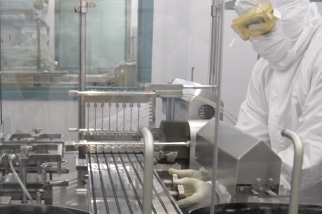
Poor workplace design has a negative impact on worker health. Performing repetitive tasks in uncomfortable work environments can lead to injuries and affect overall productivity. Linda Tapp, CSP, ALCM, CPTD, president of SafetyFUNdamentals, assisted a pharmaceutical manufacturer in redesigning workstations to improve conditions for its technicians.
The Problem
A pharmaceutical manufacturer had ergonomic issues resulting in sprains and strains. Facilities housed numerous filling rooms for producing vaccines, and workstations in those filling rooms required technicians to assume awkward postures.
Supervisors observed technicians rubbing sore wrists, elbows and shoulders at the end of their shifts. Much of the workstations’ design met Current Good Manufacturing Practice (CGMP) regulations — a set of systems enforced by the FDA — which made some corrective actions impossible.
“Sometimes CGMP can conflict with safety requirements,” says Tapp. “A safety professional may walk into an environment and see an easy fix, but it may not comply with CGMP regulations.”
The Action
Tapp worked with the manufacturer to develop a risk management program focused on early intervention and aligned with overall business objectives. The program used objective assessments over subjective observations and used systems thinking when evaluating risks and interventions.
The manufacturer used an ergonomic job measurement system to identify risk reduction opportunities. This method provided objectivity and guided decision-making based on predetermined levels of risk tolerance.
The organization prioritized solutions and implemented them with the support of a multidisciplinary team. Certain corrective measures were taken with little disruption to operations, while others needed revalidation after the manufacturer’s busy season.
One solution was adjusting forceps to reduce the length of the reach that technicians needed to access machines. Another was replacing existing trash cans with cans that could fit under counters to be more accessible. The organization also expanded filling rooms to create a larger layout.
The Outcome
The manufacturer evaluated and verified each solution to ensure effective implementation and examined data and injury reports. At the end of the production season, there were zero reports of injury or illness in the filling division. Taking a proactive approach to risk management and using systems thinking made the risk management program more effective.
Understanding Risk Management and Assessment
Get the resources and expert guidance you need to improve how you assess risks to prevent hazards, protect workers and safeguard equipment.
Learn more